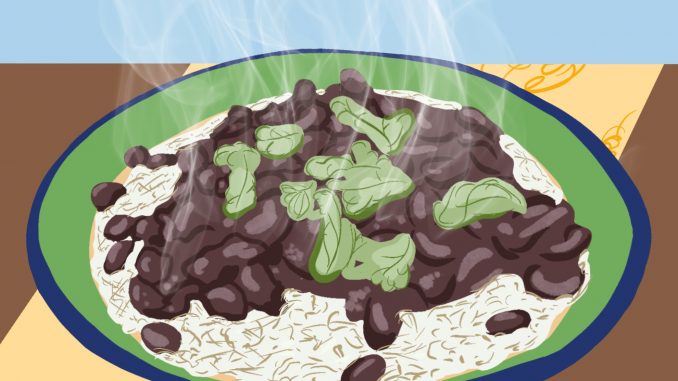
If someone had told six-year-old me that she would one day live in the United States, I would have been the happiest child on earth because I would’ve thought I was going to eat McDonald’s everyday.
Before moving to the U.S. in 2018, whenever I thought about American food, three things instantly came to my mind: burgers, french fries and hot dogs.
When I arrived in Philadelphia, I noticed different restaurants always had these three items on their menu. But the amount of food options from around the world took me by surprise.
From Arabic to Chinese to Jamaican food, there are numerous local places serving food from all over the world.
In Brazil, the variety of foods from other countries is much smaller. Sushi is probably the most common foreign food in Brazil, but it is usually very expensive.
Reflecting on the differences between these two culinary cultures is surprising because I can see how the simple things I used to do back home are different in the U.S.
From dinner time, which in Brazil is around 9 p.m. and in the U.S. around 7 p.m. or earlier, to the size of portions served in restaurants, which are much larger in the U.S., I had to change and adjust my mentality to my new environment.
On campus, I see people walking around with their iced coffees all the time. I feel like Americans are always drinking it, regardless of the time or weather. In Brazil, it is practically impossible to drink iced coffee. In both freezing cold or boiling hot weather, coffee is hot and that is the end of discussion. Free water in restaurants? Forget it. It will never happen. You will pay for each glass or bottle of water you drink.
If we talk about hot dogs, the name may have the same meaning in both Portuguese and English, but the Brazilian version has way more garnishes than the American one. Anything you can think of is inside: mashed potatoes, corn, peas or tomatoes, you name it. If you’re going to serve a hot dog with only bread, sausage and some sauce to a Brazilian, it’s better not to serve it.
As someone who comes from Rio Grande do Sul, Brazil, where the traditional food is barbecue, American meat is almost funny to me. I wouldn’t say it’s bad, it’s just completely different. Grilling burgers, for example, would never be considered barbecue back at home. In addition to the variety of preparation and meat options in Brazil, I think barbecue in Rio Grande do Sul is almost institutional. Whether you’re watching the soccer game or gathering with family, any celebration comes with a barbecue. I feel that the preparation and quality of barbecue in Brazil is more valued than in the U.S.
On Sundays, if I walk around my hometown, I always smell the roasting meat. The smell of the spices and smoke from the barbecue grills mix together with the sound of classic barbecue music — like pagode, samba or traditional southern music — creating the perfect atmosphere for a classic Sunday barbecue. No matter where I am, if I listen to any of these styles of music, I swear I can smell a barbecue being made.
While I do really like being able to choose from many options, nothing is better than the food from my home. It is not that I don’t like American food, but my comfort food will always be the one that reminds me of my origins.
My mom makes the best rice and beans. No Sunday barbecue can compete with dad’s. And no party candy is better than the Brazilian ones: extra condensed milk and powdered chocolate.
These foods are special to me not only because they represent my home, but also because they represent happy moments. Barbecues are always celebratory moments with friends or families, watching soccer and partying. Eating an açaí bowl reminds me of the beach in Brazil and relaxing moments. Pão de queijo reminds me of middle and high school, when I used to eat it every day during breaks while I was having fun with my best friends. The important thing is not where these foods are from, but the sweet moments and feelings they have given me.
Despite the fact the food doesn’t taste exactly like what’s served in Brazil, Philadelphia offers many options of Brazilian restaurants, like Picanha Brazilian Steakhouse and Chima Steakhouse, that help solve any moments of homesickness. It is nice to go there with my other Brazilian friends and eat a pão de queijo while drinking guaraná. For at least a few hours, I am back in Brazil again.
Precisely because of their differences, I think that these two cuisines complement each other in my life. I am very grateful to the U.S. for making me taste food from all over the world, but I am also extremely happy to have been born Brazilian and to have eaten the world’s best Sunday barbecue.
For me, the representation of American cuisine is the union of different culinary cultures, like the variety of food trucks with international food that we have on campus. Meanwhile, Brazilian cuisine gives me special moments and memories, regardless if I am there or in Philadelphia.


Be the first to comment